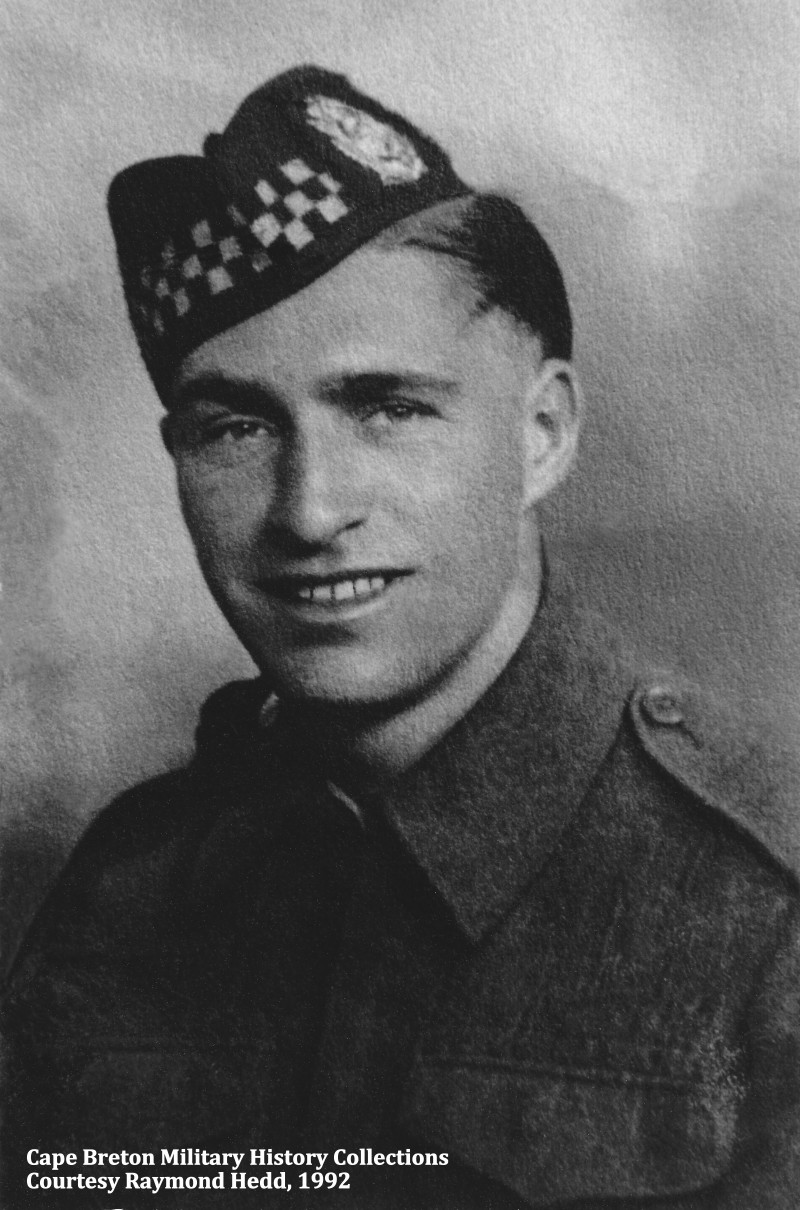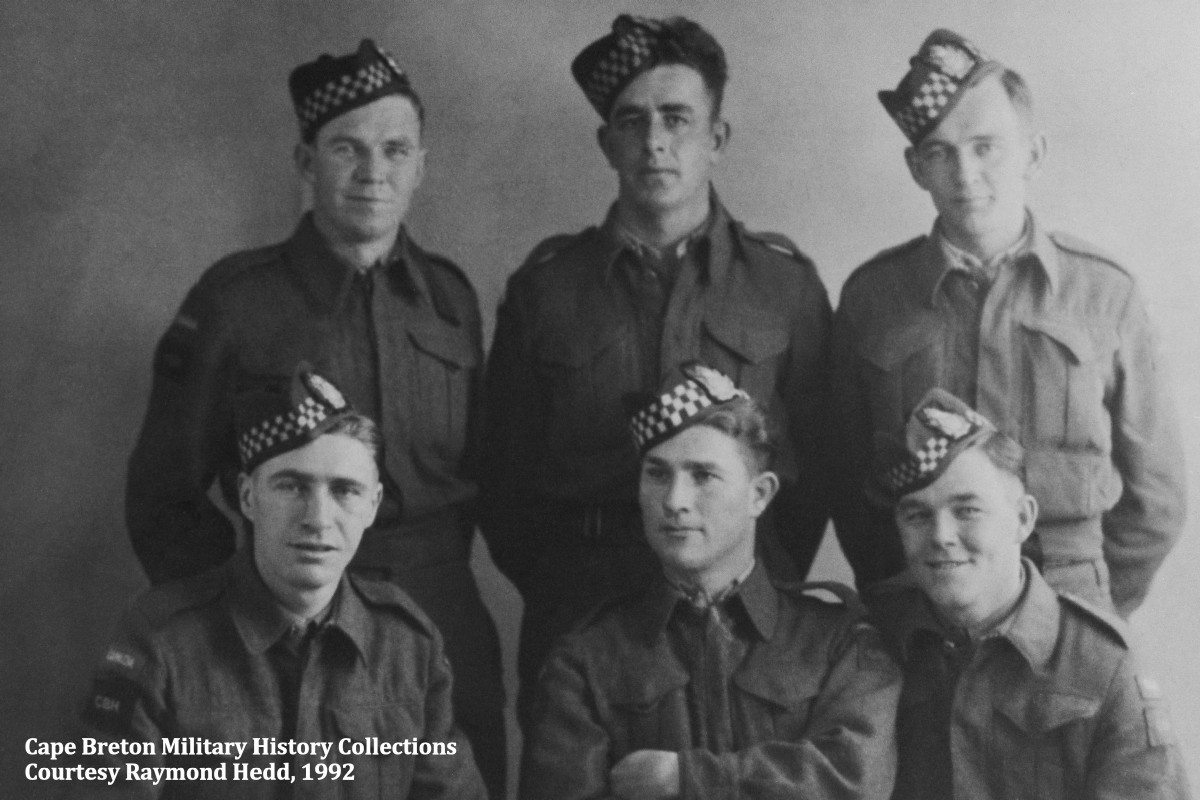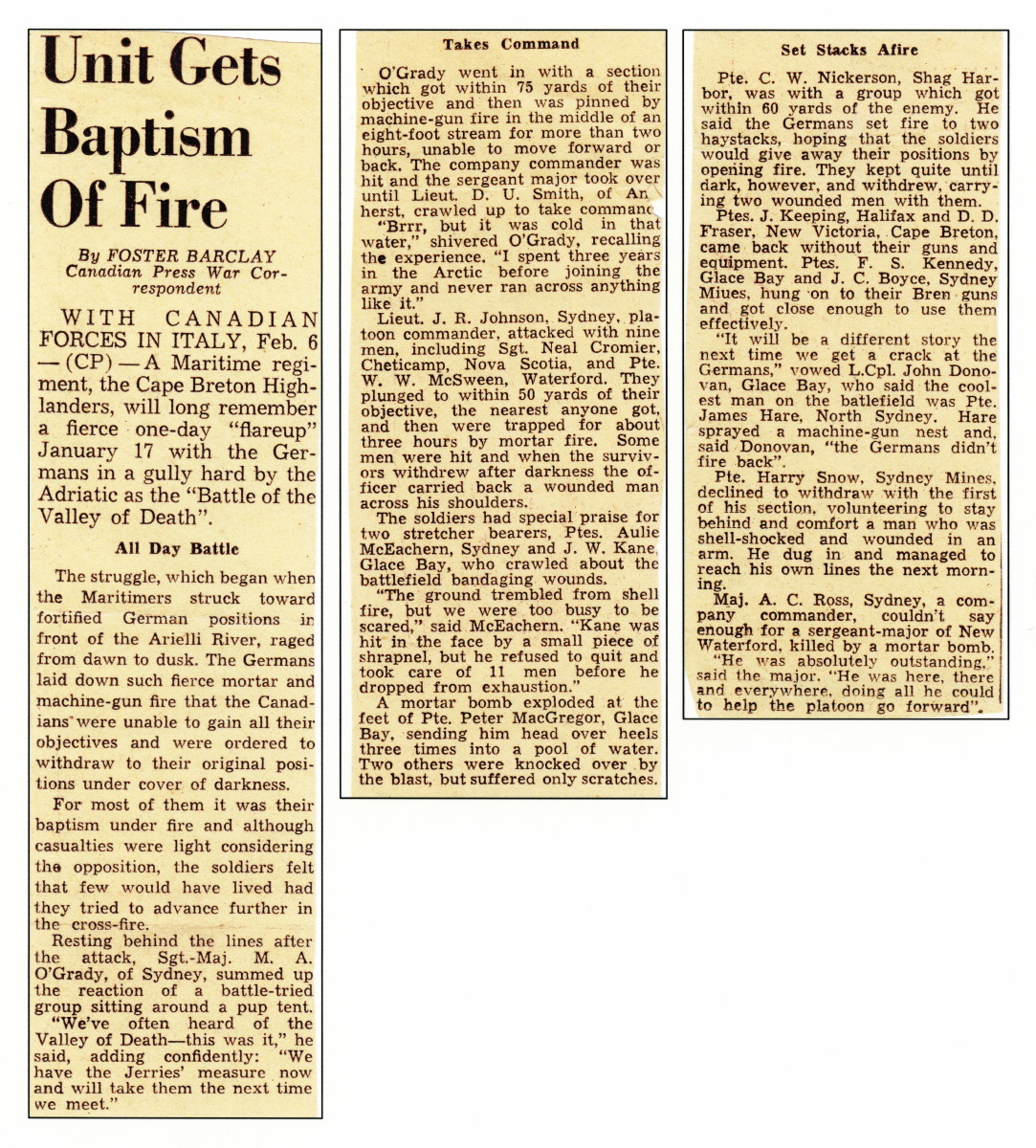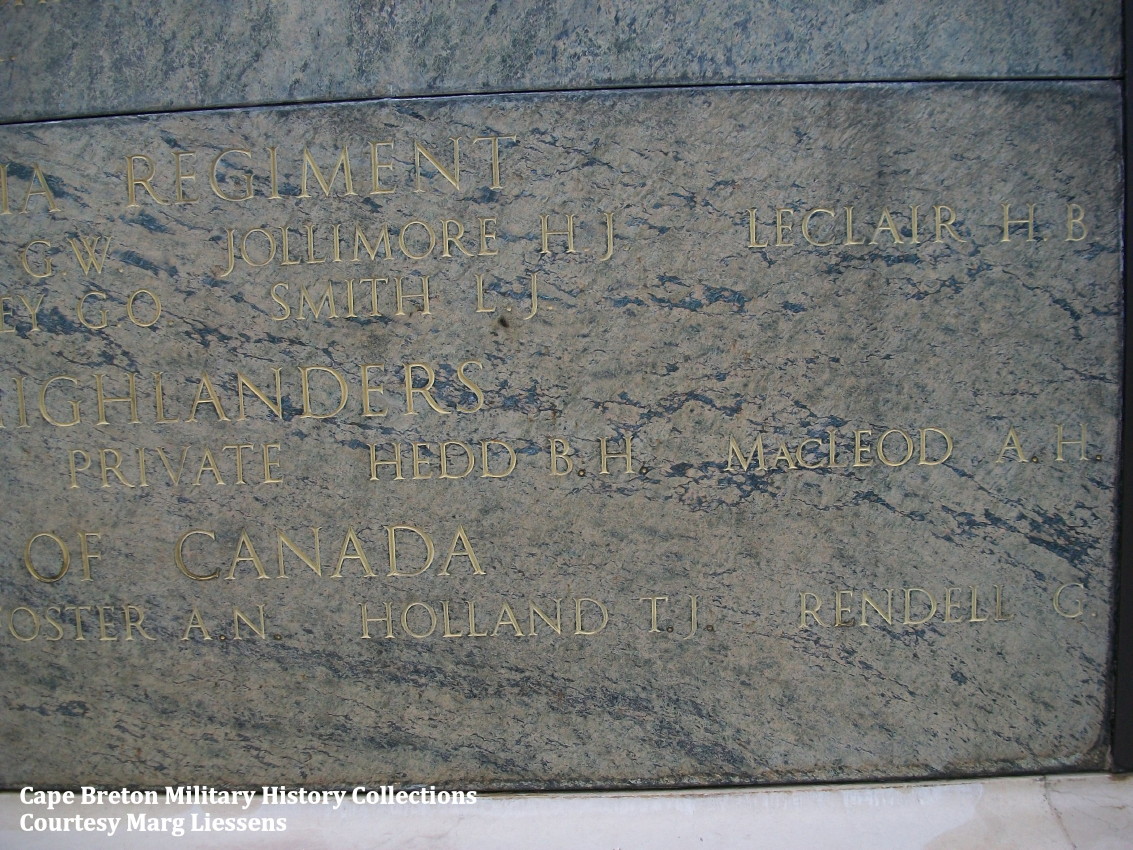Pte. Benjamine Herbert Hedd
Service Number F55543
"D" Company
Cape Breton Highlanders
Killed in Action January 17, 1944
Benjamine Herbert Hedd, or Bennie as he was more commonly known, was born in Wabana, Bell Island, Newfoundland on December 6, 1919, the son of Margaret Primrose (Short) from Tilt Cove, Newfoundland and George Willis Hedd from Sydney Mines, NS. Bennie grew up on Burchell Street in Sydney Mines with his two brothers, Owen and Raymond. He attended Sydney Mines High School, was involved with the Young People’s Society, and was well known and respected in the community.
On July 15, 1940, Bennie enlisted as a private in the active forces, Cape Breton Highlanders. At that time the battalion was recruiting, training and providing guards for various installations in the Sydney/Glace Bay area. In January, 1941, the battalion relocated to Saint John, NB, for several months, where they provided coastal defence duties before spending the summer in Ontario training at Camp Borden and Connaught Ranges. At the end of September, 1941, they transferred to Camp Debert, near Truro, NS, before sailing from Halifax to England in November.
In October, 1942, while in England, Bennie received the tragic news that his mother had been killed while travelling as a passenger on the steamship ferry S.S. Caribou. It was torpedoed and sunk by a German u-boat in the Cabot Strait.
On September 18, 1943, a month before he sailed with the battalion for Italy, Bennie married a young Scottish woman, Ruby Irvine, in her home town of Glasgow, Scotland.
On January 17, 1944, the Cape Breton Highlanders took part in a larger Canadian attack to capture high ground east of the Arielli River near Ortona, on the Adriatic Sector of the Italian Front. It was the battalion’s first major action and it was carried out in daylight against veteran German paratroopers entrenched in well prepared defensive positions. To add to their difficulties, the Perth Regiment on the left had failed to take their objective earlier in the morning which allowed the Germans to direct their full attention on the Cape Breton Highlanders’ attack.
Bennie Hedd was in “D” Company which led the assault across the valley of a stream called the Riccio, with their objective being a piece of high ground near two roads on the far side of the Riccio. “C” Company followed ten minutes later. Although one platoon managed to make it across the stream, many “D” Company men were pinned down in the water due to the intense machine gun and mortar fire. Promised smoke protection was ineffective.
George Hall, who was also in “D” Company and was present at the time, recalled in a 1992 interview that he and Cpl. Aubrey Smith had been crouching against the bank of the stream in water up to their shoulders. Bennie Hedd and another man, Pte. Ross Chaisson, were nearby. George Hall was summoned by Sergeant-Major O’Grady, so he moved down the stream away from his comrades. A short time later a mortar shell landed amid the group of men he just left, killing Bennie Hedd, Cpl. Smith and Pte. Chaisson. George believed that there may have been others killed by the same blast and there were many wounded.
Unable to advance any further under the relentless machine gun and mortar fire, and with mounting casualties, the survivors were ordered to pull back to their original positions after dark. Bennie Hedd’s body was never recovered.
Thirteen Cape Breton Highlanders were killed in this action with many more wounded. To the survivors the battlefield forever became known as “The Valley of Death”.
Bennie Hedd’s name is inscribed on the Casino Memorial located in the Cassino War Cemetery, Cassino, Italy. He was 24 years old.
References:
- Library Archives Canada website for Second World War Service Files - War Dead 1939-1947. To access the page pertaining to Benjamine Herbert Hedd, click HERE.
- Canadian Virtual War Memorial website. To accesss the page pertaining to Benjamine Herbert Hedd, click HERE.
- Find a Grave website for the Cassino Memorial. To accesss the page pertaining to Benjamine Herbert Hedd, click HERE.
- War Diary - Cape Breton Highlanders.
- Morrison, Alex and Slaney, Ted. The Breed of Manly Men – The History of the Cape Breton Highlanders. Sydney: City Printers Limited, 2002.
- Family information provided by Raymond Hedd (Benjamine Hedd's brother) in 1992.
The Collection:
Below are photos pertaining to Benjamine Hedd from various sources including his brother, Raymond Hedd of Reserve Mines, Cape Breton, in 1992. Also included is a wartime newspaper article describing the battle in Italy where Benjamine Hedd was killed.
Click or tap on the images below for high resolution, expandable images. Use your back button to return to this page.
Benjamine Hedd
Cape Breton Highlanders
Undated - Circa 1940-1945
Studio portrait photo of Benny Hedd. The location is unknown.
Photographer: Unknown
Ref. Number: CBHHR-HeddBH-1.3)
Image Information: Scan of a photographic copy of original photo
Source: Robert MacLellan Collection (permission to copy original photo courtesy Raymond Hedd, 1992)
Benjamine Hedd with Group of Soldiers
Cape Breton Highlanders
England
Circa 1942-1943
Front Row, Left to Right:
1. Benjamine (Benny) Hedd
2. Hector Daniel MacLellan, Meat Cove, NS (Killed in action in Holland on May 1, 1945)
3. Daniel Lannigan, Sydney Mines, NS
Back Row, Left to Right:
1. Michael Lannigan, Sydney Mines, NS
2. Norman Brown, Sydney Mines, NS
3. Kenny McQuarrie, Glace Bay, NS (?)
Photographer: Unknown
Ref. Number: CBHHR-HeddBH-2.3)
Image Information: Scan of a photographic copy of original photo
Source: Robert MacLellan Collection (permission to copy original photo courtesy Raymond Hedd, 1992
Newspaper Clipping Article
Unidentified Newspaper
Dated February 6, 1944
This section contains one newspaper clipping dispatch from an unidentified newspaper. The article is dated February 6, 1944, and was written by Canadian press war correspondent Foster Barclay. The article pertains to the Cape Breton Highlanders' first major battle of the war, an ill-fated assault across the valley of a stream called the Riccio, in Italy, on January 17, 1944. The battlefield later became known as "The Valley of Death". Many men are named in the article.
Ref. Number: 0-5 (1-4-1-3.2)
Writer: Foster Barclay (Canadian Press War Correspondent)
Image Information: Scan of original newspaper clipping
Source: Robert MacLellan Collection
Cassino Memorial
Cassino War Cemetery
Cassino, Italy
2013
The Cassino Memorial is located within the Cassino War Cemetery. It consists of a large cross which overlooks gardens, a water feature and eight stone pillars incribed with the names of over 3100 Commonwealth servicemen who took part in the Italian campaign and whose graves are not known. In addition 900 Indian soldiers, whose remains were cremated, are commemorated on the memorial.
Benjamine Hedd's name is inscribed on one of the pillars of the memorial.
Photographer: Marg Liessens
Ref. Number: 24-1 (2-4.1)
Image Information: Received as electronic file
Source: Marg Liessens, London, Ontario, 2024




